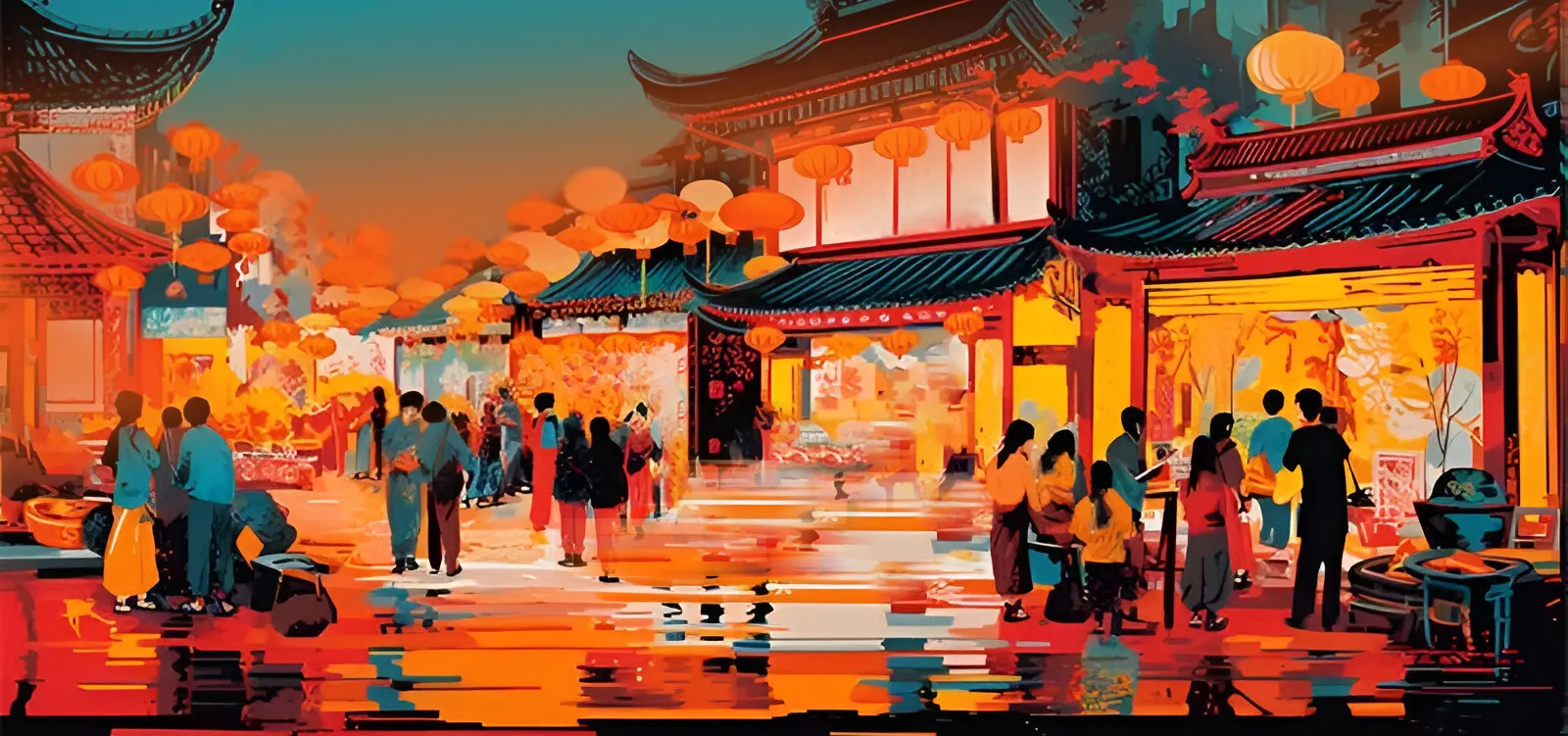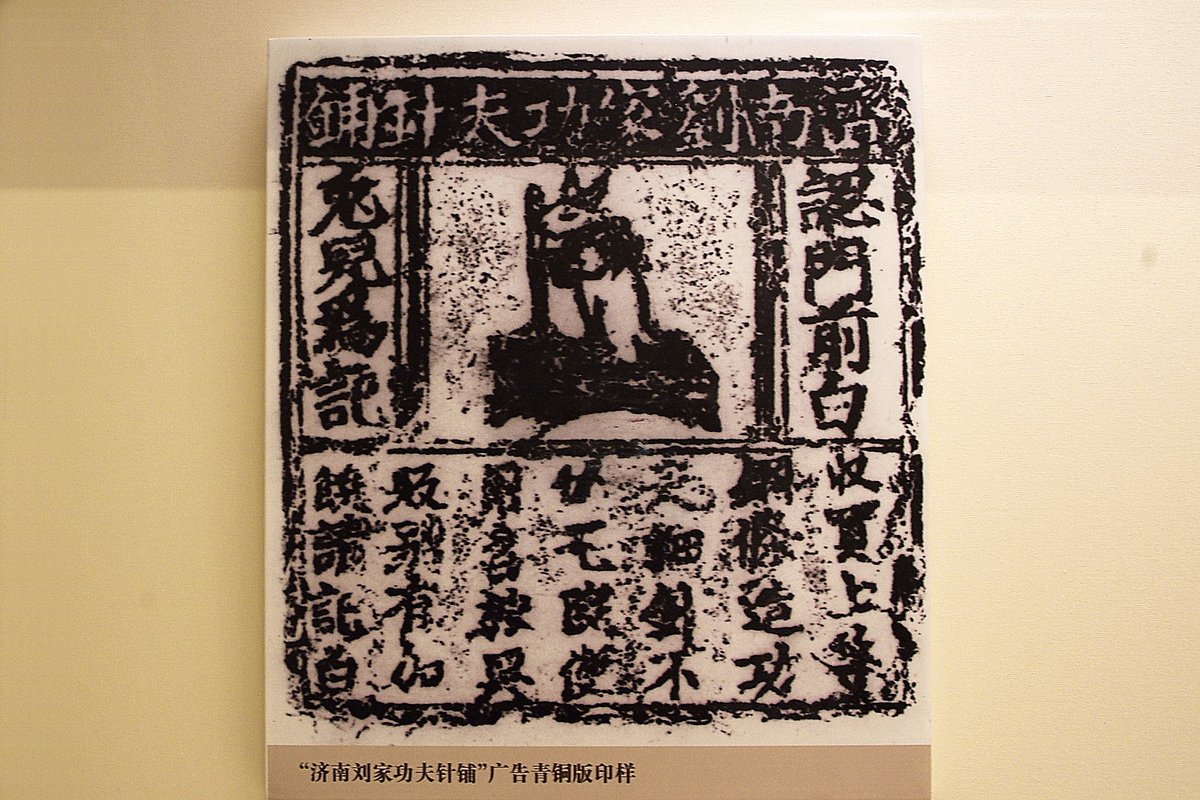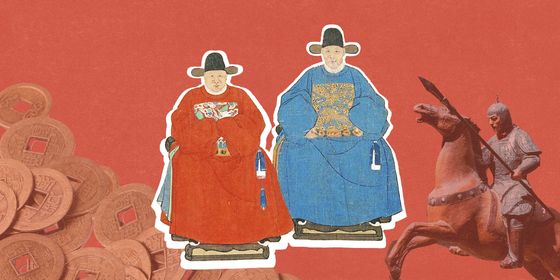Slogans, music, celebrities, and rhymes all helped ancient Chinese advertise their wares for sale
China’s marketing managers know the power of advertising. A pithy slogan, the right endorsement from an influencer online, or a catchy jingle can all make a brand stand out. But before mass media and the internet, ancient Chinese still had to find ways to hawk their wares.
Almost as soon as trading activities emerged in China thousands of years ago, rudimentary advertising followed. Using sounds, banners, and even contemporary celebrities, ancient traders tried to drum up sales and beat the competition. Here are the strategies ancient Chinese employed to sell.
Ancient influencers
Celebrities and online influencers are vital marketing tools today—they also worked well in ancient times. According to Strategies of the Warring States (《战国策》), a collection of stories and historical events compiled during the Han dynasty (206 BCE – 220 CE), a horse seller once employed a local celeb to make sales.
The trader brought his horses to market and shouted to the crowd about their quality and fair price, but no one seemed interested. He changed his strategy and went to famous local horse expert Bo Le (伯乐) with a proposal: The seller would pay Bo Le to simply visit his stall and look at his horses, feign interest in them, and later come back a second time so that he would appear extremely enticed by them. Bo Le agreed, and once he showed his “interest” in the horses, other market-goers quickly gathered around the stall and bought up every horse the man had for sale (some at 10 times their original price).
Another example of celebrity advertising is recorded in the Book of Jin (《晋书》), an official history of the Jin dynasty (265 – 420). When a government official was dismissed from his position, he had to return to his hometown from the capital. On the way, he visited his friend Xie An (谢安), a famous politician at the time. Xie asked the friend whether he had enough money to afford the journey, but his downcast friend replied that he had no cash, only thousands of cattail leaf fans that he intended to sell to fund his travel, food, and accommodation on the route.
Xie took one of the fans and began taking it out with him daily. Soon, Xie’s influence meant the fans became the height of fashion, and when people asked where they could buy one Xie directed them to his recently fired friend. The fans sold rapidly, and Xie’s friend could even raise the price substantially. Though the story doesn’t record what happened to the friend next, he almost certainly made enough money to get home.
Slogans and chants
Of course, the simplest (and probably the earliest) way to attract customers was to shout about the quality and reasonable price of one’s goods. Over 2,000 years ago, poet Qu Yuan (屈原) recorded in his poem “Heavenly Questions” the scene of Jiang Shang (姜尚), a famous military strategist and general of the Zhou dynasty (1046 – 256 BCE), selling meat in the market. Before Jiang met King Wen of Zhou and was recruited as his advisor, he was a butcher, who, according to Qu’s description, “knocked his knife on the table to make a sound in the market.” A primitive method perhaps, but enough to grab the attention of some customers, according to Qu.
Records also show that sellers during the Han dynasty used music to attract business. In his Annotations of the Book of Songs (《毛诗传笺), Zheng Xuan (郑玄) wrote that it was a common custom for candy sellers to blow a xiao, an ancient bamboo flute, to attract customers.
Noise alone may not have been enough though—peddlers also began to invent clever rhymes and chants to market their goods. Today it’s common to hear sellers cry “走过路过不要错过 (If you see it, don’t miss it),” but in the Song dynasty (960 – 1279), a time when commerce and trade boomed in China’s cities, the rhymes were even more intricate, and even became an art form.
According to Records of the Origins of Affairs and Things (《事物纪原》), a book compiled in the Song dynasty tracing the origins of creatures and traditions, “In the capital, sellers always hawk with rhyme. People adapt a tune and compose lyrics to make it become an enjoyable artistic form known as ‘chant and shout.’”
Later, in Hawking Sounds of the Beijing Market (《燕市货声》), compiled in the Qing dynasty (1616 – 1911), a host of catchy advertisements were recorded. At this time, however, the emphasis was on rhyme and entertainment, so many of the lyrics were nonsensical. For example, one seller would apparently shout: “Grab a handful of stir-fried broad beans! Marry a wife and forget your parents!” Others managed to create jingles that made sense. One plum juice seller would cry: “It quenches thirst and clears heat; with rose flavor and sugar. If you don’t believe it’s delicious, buy one to have a taste!”
Adverts in print
In 1946, historians Yang Kuan and Jiang Dayi came across the world’s oldest known print advertisement in a Shanghai antique shop. The copper printing plate, which dates back to the Northern Song dynasty (960 – 1127), is an advertisement for “Jinan Liu’s Fine Needle Shop” and even features a cute rabbit logo, which would have been printed onto paper. The print continues: “We buy high-quality steel rods and make fine needles, ready for use at home in no time. Favorable rates for wholesale buyers are available.” It also encourages customers to “look out for the rabbit sign at the gate” so that they come to the right shop.
Later, in the Yuan dynasty (1206 – 1368), people began to print ads on paper used to wrap and transport goods. In 1985, archeologists digging up a Yuan-dynasty grave found such a wrapper advertising a paints business: “We produce first-class bright red, purple, and other oil paints. Have a try and you will discover its uniqueness.” Not quite as pithy as today’s slogans (it’s no “Just Do It”), but not bad.
Banners of attraction
For centuries, shops and restaurants used banners of cloth to make passersby aware of their existence. At first, these signs were mostly used by taverns, so they were called “wine banners (酒旗).” They date back to at least the Warring States period (475 – 221 BCE), with the legal text Han Fei Zi (《韩非子》) recording a wine shop “selling high-quality wine, and raising their banner high.”
Drinking culture flourished during the Tang dynasty (618 – 907), and in the Complete Tang Poems (《全唐诗》), a collection of around 49,000 poems from the era, over 40 contained the term “wine banner.” Du Mu’s (杜牧) famous poem “Spring in the South of Yangtze” includes the line: “For miles and miles orioles chirp midst red flowers and green trees. In hamlets and water towns, tavern banners flutter in the breeze.”
Banners also sometimes contained slogans. In the classic novel Outlaws of the Marsh (《水浒传》), the hero Wu Song famously fights a tiger after seeing a banner with a slogan on it outside a tavern near Jingyang Ridge. The slogan read: “After Three Bowls, Do Not Cross the Ridge,” a way of marketing the tavern’s wine as so strong that anyone who drank just three bowls would be too drunk to continue their journey.
The marketing worked, as Wu felt challenged by the message and promptly drank 18 bowls at the tavern before marching into the mountains, where he fought and killed a huge tiger in his drunken stupor. Sadly the novel doesn’t explain what happened to the tavern’s business after Wu’s epic adventure—but a smart marketer could have changed their banner: “After 18 bowls you’ll be stronger than a tiger.”













